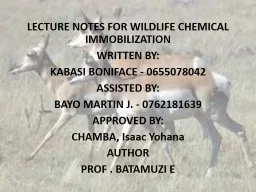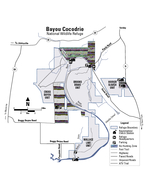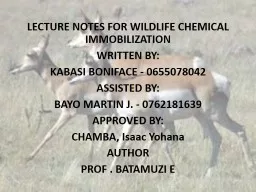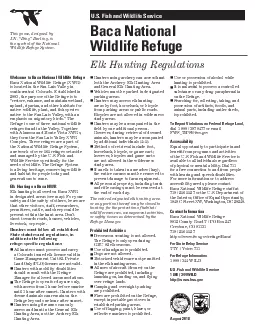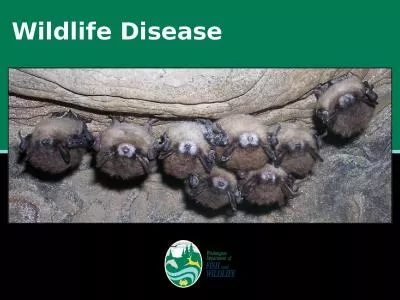PPT-LECTURE NOTES FOR WILDLIFE CHEMICAL IMMOBILIZATION
Author : ellena-manuel | Published Date : 2019-11-24
LECTURE NOTES FOR WILDLIFE CHEMICAL IMMOBILIZATION WRITTEN BY KABASI BONIFACE 0655078042 ASSISTED BY BAYO MARTIN J 0762181639 APPROVED BY CHAMBA Isaac Yohana AUTHOR
Presentation Embed Code
Download Presentation
Download Presentation The PPT/PDF document "LECTURE NOTES FOR WILDLIFE CHEMICAL IMMO..." is the property of its rightful owner. Permission is granted to download and print the materials on this website for personal, non-commercial use only, and to display it on your personal computer provided you do not modify the materials and that you retain all copyright notices contained in the materials. By downloading content from our website, you accept the terms of this agreement.
LECTURE NOTES FOR WILDLIFE CHEMICAL IMMOBILIZATION: Transcript
Download Rules Of Document
"LECTURE NOTES FOR WILDLIFE CHEMICAL IMMOBILIZATION"The content belongs to its owner. You may download and print it for personal use, without modification, and keep all copyright notices. By downloading, you agree to these terms.
Related Documents

